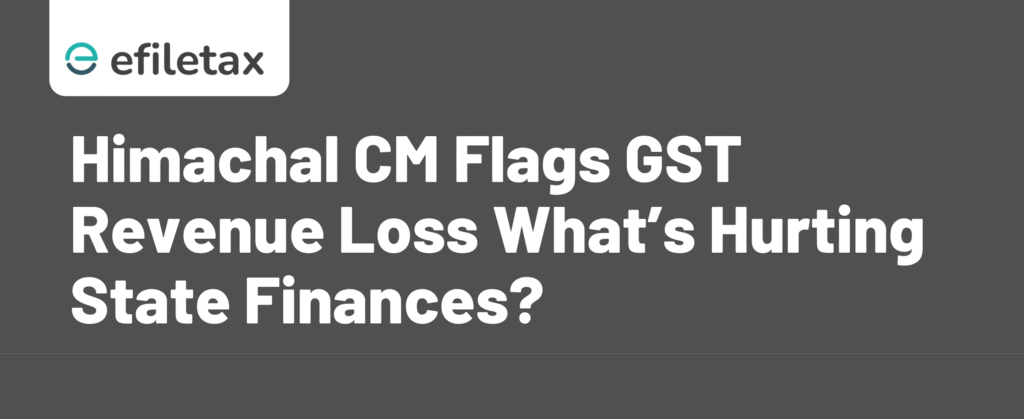
Why Himachal Pradesh Is Facing GST Revenue Losses
Himachal Pradesh GST losses have become a pressing issue in 2025. Chief Minister Sukhvinder Singh Sukhu has raised strong objections, claiming the state is losing over ₹5,000 crore annually post-GST implementation. This blog breaks down what’s really happening — from constitutional provisions to the demand for compensation revival.
Background: Why Is GST Hurting Himachal Pradesh?
Under the pre-GST regime, states like Himachal earned significant revenue through VAT, excise duty, and entry tax — especially from liquor, tourism, and hydro sectors. With GST’s uniform structure:
- Tourist-heavy consumption shifted to destination states
- No compensation post-2022, as the 5-year guarantee ended
CM Sukhu has argued that the loss of fiscal autonomy has hurt mountainous and low-resource states more than others.
What the Law Says: GST Compensation History
- Article 279A(5): GST Council to recommend compensation for 5 years
- Compensation to States Act, 2017: Promised full revenue protection till June 2022
- Post-2022: No legal provision to continue compensation
- Centre’s view: Compensation period is over, any extension needs legislative action
CM Sukhu has now demanded either:
- Reinstatement of GST compensation, or
- Special economic package for hill states
Revenue Loss Breakdown (As per Himachal Pradesh Govt)
| Year | Estimated GST Loss (₹ crore) |
|---|---|
| 2022–23 | 4,869 |
| 2023–24 | 5,284 |
| 2024–25 | 5,572 (projected) |
The state claims this affects its ability to fund welfare schemes, roads, and rural health infrastructure.
Expert Insight: What Can Be Done?
Tax Consultant’s View (Efiletax Insight):
“States like Himachal need a hybrid GST model where geographically disadvantaged regions get a fiscal buffer. Compensation revival, if not permanent, must be reconsidered for select states under special status.”
Recent Legal and Policy Developments
- GST Council’s 52nd meeting (2023): Discussed “revenue strain in hilly states” but no concrete support was extended
- Standing Committee on Finance (2024): Recommended a new fiscal devolution formula based on terrain and infrastructure cost
Suggested Way Forward
- Reform GST formula for consumption vs origin
- Special Grant-in-Aid for mountain states
- Tourism-linked GST carve-outs
- Increase devolution percentage under Finance Commission award
Subheading with Keyphrase: Himachal Pradesh GST Losses – A Fiscal Red Flag?
Yes. If unaddressed, it could lead to:
- Higher state borrowing
- Delay in welfare delivery
- Infrastructure slowdown
- Growing Centre–State friction
States with ecological or geographic disadvantages need tax policy reforms beyond uniformity.
Summary
Himachal Pradesh GST losses are rising, with CM Sukhu demanding renewed compensation. Post-GST, the state lost key revenue sources, and now faces fiscal strain exceeding ₹5,000 crore annually. Legal provisions under Article 279A no longer provide support, triggering calls for special packages and GST reforms for hilly regions.
FAQ Section
Q1. Why is Himachal Pradesh losing GST revenue?
Because GST replaced state-specific taxes like VAT and entry tax, reducing its local collections.
Q2. Is the Centre legally bound to pay GST compensation beyond 2022?
No. The Compensation to States Act, 2017, allowed it only for 5 years unless amended.
Q3. What can be done to help such states?
Reviving compensation selectively, or offering targeted fiscal grants, is being considered.